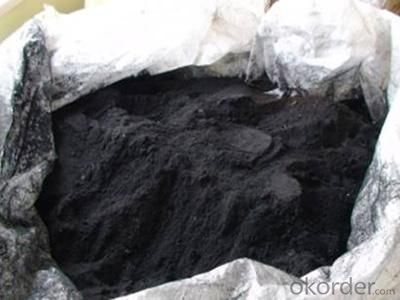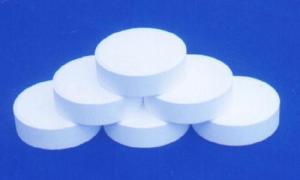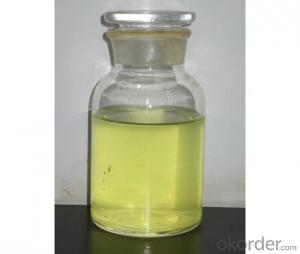Market Price For Carbon Black With Best Carbon Black
- Loading Port:
- Qingdao
- Payment Terms:
- TT OR LC
- Min Order Qty:
- -
- Supply Capability:
- 20000 m.t./month
OKorder Service Pledge
OKorder Financial Service
You Might Also Like
Specifications
1.Granular pigment
2.N220.N330.N550,N660
3.Plastic,rubber industry
4.Pyrolysis Carbon Black Prices,
5.Samples are available,
Pyrolysis Carbon Black Prices
1. Black powder or granular
2. Widely Used in plastic, rubber, masterbatch, tire, paints, ink, pigments etc.
3. Types: N220, N330, N550, N660, N990, N110, N115, N234, N326, N339, N375, N539, N550, N880 etc.
4. High purity
Specification of carbon black
Classification: Chemical Auxiliary Agent | CAS No.: 1333-86-4 | Purity: 99.9 |
Place of Origin: hunan,China (Mainland) | Type: Adsorbent | Adsorbent Variety: Activated Carbon |
Usage: Coating Auxiliary Agents, Electronics Ch... | Brand Name: Sanji | Model Number: rubber grade |
Color: Black | Category: carbon black |
|
Items | N220 | N330 | N550 | N660 |
Iodine Absorption Number g/kg | 121 +/-5 | 82 +/-5 | 43 +/-4 | 36 +/-4 |
DBP Absorption Number 10-5m3/Kg | 114 +/-5 | 102 +/-5 | 121 +/-5 | 90 +/-5 |
DBP Absorption Number of Compressed Sample 10-5m3/Kg | 93~107 | 81~95 | 81~95 | 68~82 |
CTAB Surface Area 103m2/Kg | 106~116 | 79~87 | 38~46 | 31~39 |
Nitrogen Surface Area 103m2/Kg | 114~124 | 78~88 | 38~46 | 30~40 |
Tint Strength | 110~120 | 98~108 | - | - |
Heating Loss | 3.0 | 2.5 | 2.5 | 1.5 |
Ash | 0.5 | 0.5 | 0.5 | 0.5 |
Tensile Strength Map ≥ | -0.8 | -1.5 | -3.5 | -3.5 |
Extension% ≥ | +10 | -10 | -10 | +10 |
Map Modulus at 300% | -2.5 +/-1.3 | -1.7 +/-1.3 | -1.7 +/-1.3 | -3.5 +/-1.3 |
Packaging & Delivery
| Packaging Detail: | 25kg/knitted bag with top grade liner film and good waterproof property |
| Delivery Detail: | 5 - 17 days |

- Q: Why the amount of catalyst is too small will make the chemical reaction rate slowed down
- The catalyst changes the reaction rate by changing the reaction pathway and reducing the activation energy of the reaction.
- Q: Chemical production of iodine and magnesium with water as catalyst!
- In the 250mL three bottles were equipped with spherical condenser and constant pressure dropping funnel, in the condensate tube connected to the anhydrous calcium chloride drying tube. The flask was placed with 1.5 g of magnesium chip and a small tablet of iodine, 10 g of bromobenzene and 30 mL of anhydrous ether were mixed in a constant pressure dropping funnel. First 1/4 of the mixture into the flask, a few minutes later see the magnesium surface of the bubble generated, the solution was slightly cloudy, iodine color began to disappear. If no reaction occurs, use a hot water bath. After the start of the reaction, stir, slowly dropping the remaining bromophene ether solution, dropping the rate to keep the solution was slightly boiling state, after adding, in the water bath to continue reflow 0.5h, magnesium tablets full effect.
- Q: Hydrogen and oxygen in the role of the catalyst can do the chemical formula of aviation fuel?
- You two yeah? Meaning that hydrogen is ignited in oxygen to release energy to push the rocket forward, as the catalyst for those who love,
- Q: What is the principle of catalyst reaction rate in chemical reactions?
- Whether the chemical reaction can be carried out according to the change of free energy, but only according to the change of free energy can not determine whether the reaction can be completed, because the chemical reaction is also completed by the reaction of the energy barrier, that is, if the reaction energy barrier is high, To provide some energy, across the barrier, to complete the reaction. The energy barrier is called activation energy. And the role of the catalyst is to reduce the activation energy, so that in a relatively harsh environment, chemical reaction occurs.
- Q: what is a catalyst ?
- A substance which initiate the rate of chemical reaction without undergoing any change by itself till the end of the reaction.
- Q: What is the reaction of hydrogen peroxide to add manganese dioxide?
- This problem is not easy to answer, the principle of manganese dioxide catalytic hydrogen peroxide I have not learned, but I have also considered, I think so, hydrogen peroxide and manganese dioxide first combination, the formation of permanganic acid, permanganic acid is a Very special acid is indeed present, it can not be stable under normal conditions, it will be further decomposition, the formation of manganese dioxide, oxygen and water
- Q: What is a chemical catalyst?
- A substance that participates in chemical reactions but does not change the quality and chemical properties. It can change the reactant activation energy, speed up or slow down the reaction rate.
- Q: It's a GCSE Chemistry questionI just need to know why there are so many
- Many important chemical reactions require inputs of energy to proceed. If a catalyst is present less energy will be required to complete the reaction. Catalysts are substances that are mixed in with materials that are to be reacted, but they themselves do not, in the end, change chemically. They establish a local environment that promotes one or more chemical reactions to take place. A catalyst is important in many industrial processes. Sulfuric acid, which is used to produce batteries, detergents, dyes, explosives, plastics, and many other produces, is commonly produced using a catalyst called vanadium oxide. Ammonia, a primary component of many fertilizers, could not be produced economically without the use of iron oxide which speed up the reaction. The process of catalyst also affects the state of our global environment. Automobiles use catalytic converters to treat exhaust. The metals platinum and palladium facilitate the chemical conversion of noxious gases to more inert forms, greatly decreasing the environmental impact of combustion engines. Probably the most important impact of catalyst is on life itself. All important biochemical reactions are catalyzed by molecules called enzymes. Most enzymes are proteins which catalyze specific reactions within cells. Some examples include polymerases, which synthesize DNS and RNA, peptidases, which digest protein, and ATP synthases, which produce energy for the many different cell activities.
- Q: Which chemical reaction is added to the catalyst in order to slow down the reaction
- CaC2 and water reaction to ethylene plus salt water (slow chemical reaction rate)
- Q: Chemical reactions in the presence of impurities will cause catalyst poisoning, how to understand this sentence
- Catalyst poisoning reaction of raw materials contained in the trace impurities to the catalyst activity, selectivity significantly decreased or lost phenomenon. The nature of the poisoning phenomenon is a trace of impurities and the catalytic activity of the center of a chemical effect, the formation of non-active species. In the gas-solid heterogeneous catalytic reaction is formed in the adsorption complex. One is that if the toxic and active components of the role of weak, can be a simple way to restore the activity, known as reversible poisoning or temporary poisoning. The other is irreversible poisoning, it is impossible to restore the activity in a simple way. In order to reduce the side reaction activity, it is sometimes necessary to allow the catalyst to be selected for poisoning.
Send your message to us
Market Price For Carbon Black With Best Carbon Black
- Loading Port:
- Qingdao
- Payment Terms:
- TT OR LC
- Min Order Qty:
- -
- Supply Capability:
- 20000 m.t./month
OKorder Service Pledge
OKorder Financial Service
Similar products
Hot products
Hot Searches
Related keywords





























